Arbours, pergolas and gazebos – what’s the difference?
Covered arbours, pergolas and gazebos add a striking architectural feature to your garden, as well as privacy and shade. But what's the difference and how do you choose the right one?
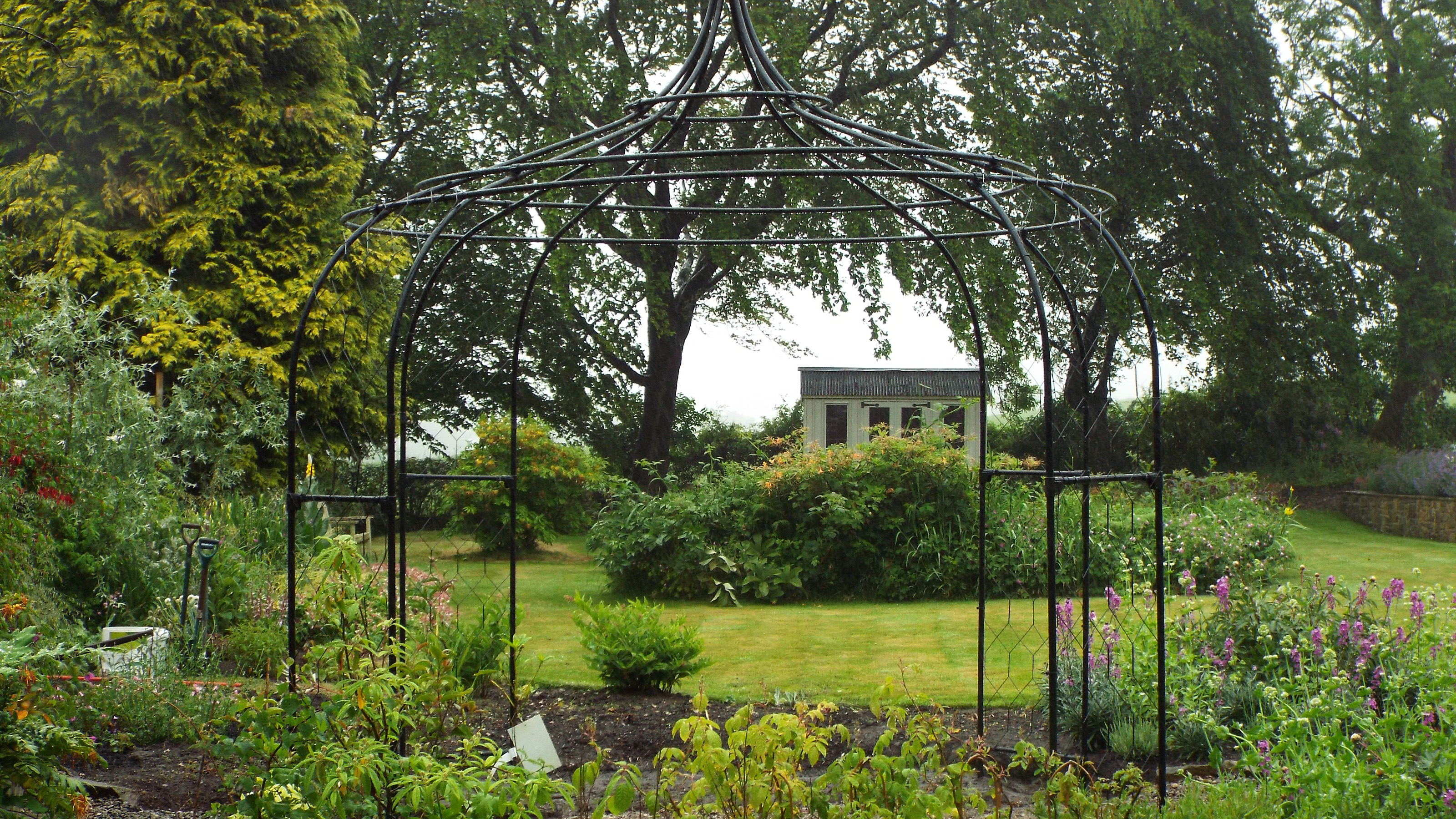

Adding arbours, pergolas and gazebos to your garden offers the opportunity to create a relaxing summer sanctuary or winter retreat that's a real design statement. It can help to create a bespoke zone for relaxing or alfresco eating that really enhances the look of your garden.
The terms pergola, arbour or gazebo are often used interchangeably but there are a few key differences that set them apart. Unlike a summer house or garden studio, these structures are open or semi-open depending on their individual design.
If you're planning to add a garden structure to your outdoor space, think about the reason for adding one to your scheme. Perhaps you want an elegant outdoor setting that’s a destination in its own right, a place to escape to or somewhere to enhance the view or help obscure a less desirable one. Also factor in what a pergola-like structure will add to the overall look and feel of your garden.
Adding an architectural element that looks good all year round is a great way of enhancing your garden design too. Whether it's using the latest pergola ideas as a way to show off some of your favourite climbing plants, adding a stunning gazebo as a striking focal point or finding clever ways to zone your garden, we've got plenty to inspire. Read on to find out about arbours, pergolas and gazebos and discover the best option for you.
What is a pergola?
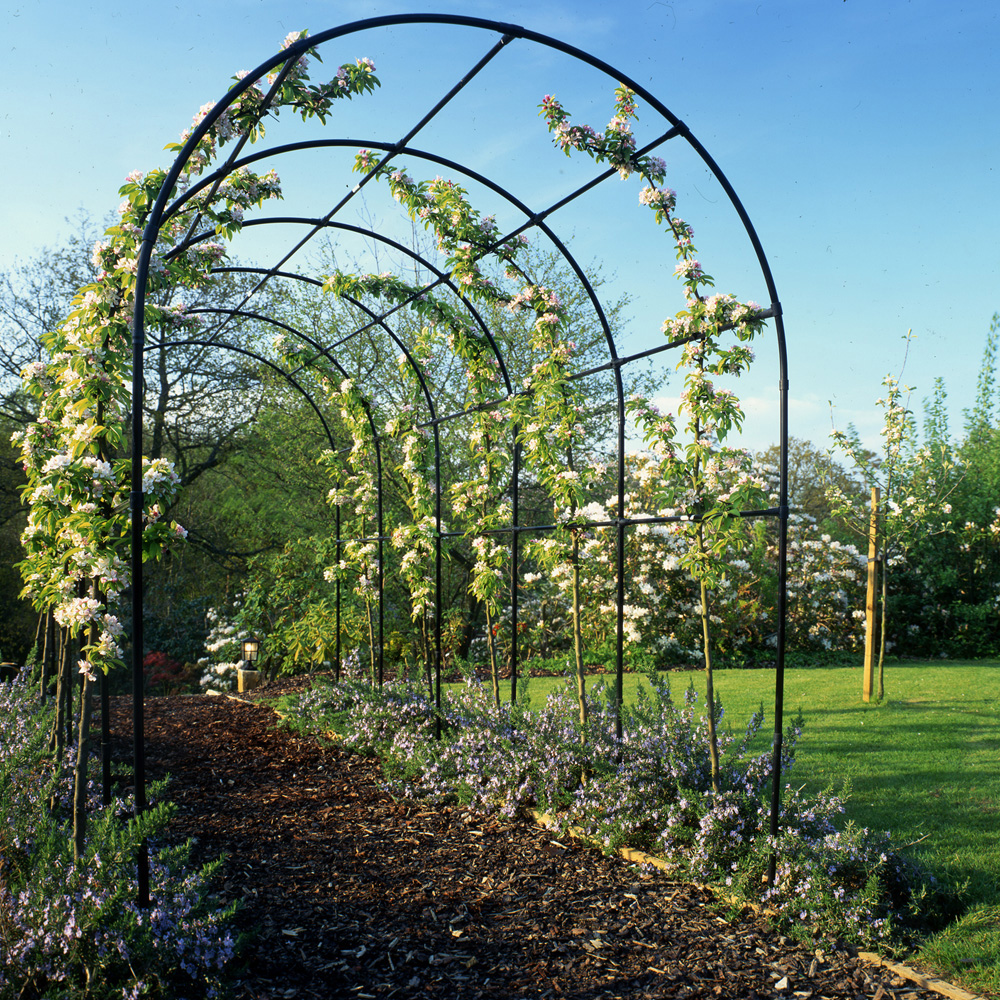
This Round pergola from Agriframes is a stunning way to create a tunnel over a pathway
A freestanding open structure that's traditionally rectangular or square in shape, pergolas are made with vertical posts and horizontal beams that form an overhead canopy. They are used to cover walkways and to provide shelter for seating areas. Some are connected to form a tunnel over a pathway. Pergola roofs are usually open but can be covered, in which case they are often referred to as a pavilion.
A pergola in the garden is a lovely feature. Not only does it give you privacy from neighbors but it also creates shelter and shade. A pergola that arches over a path through the garden can create a shaded and scented tunnel that's a real treat to walk under on a hot summer’s day. They are also the perfect spot for outdoor entertaining.
'Pergolas introduce movement into a garden,' say the team at Agriframes. 'They encourage you to follow a path and emerge with a different perspective on the garden.' In a long garden, a pergola placed at the end can create a 'destination' to accommodate different activities (yoga sessions, reading, partying) at varying times of day (breakfast, lunch, cocktails...)
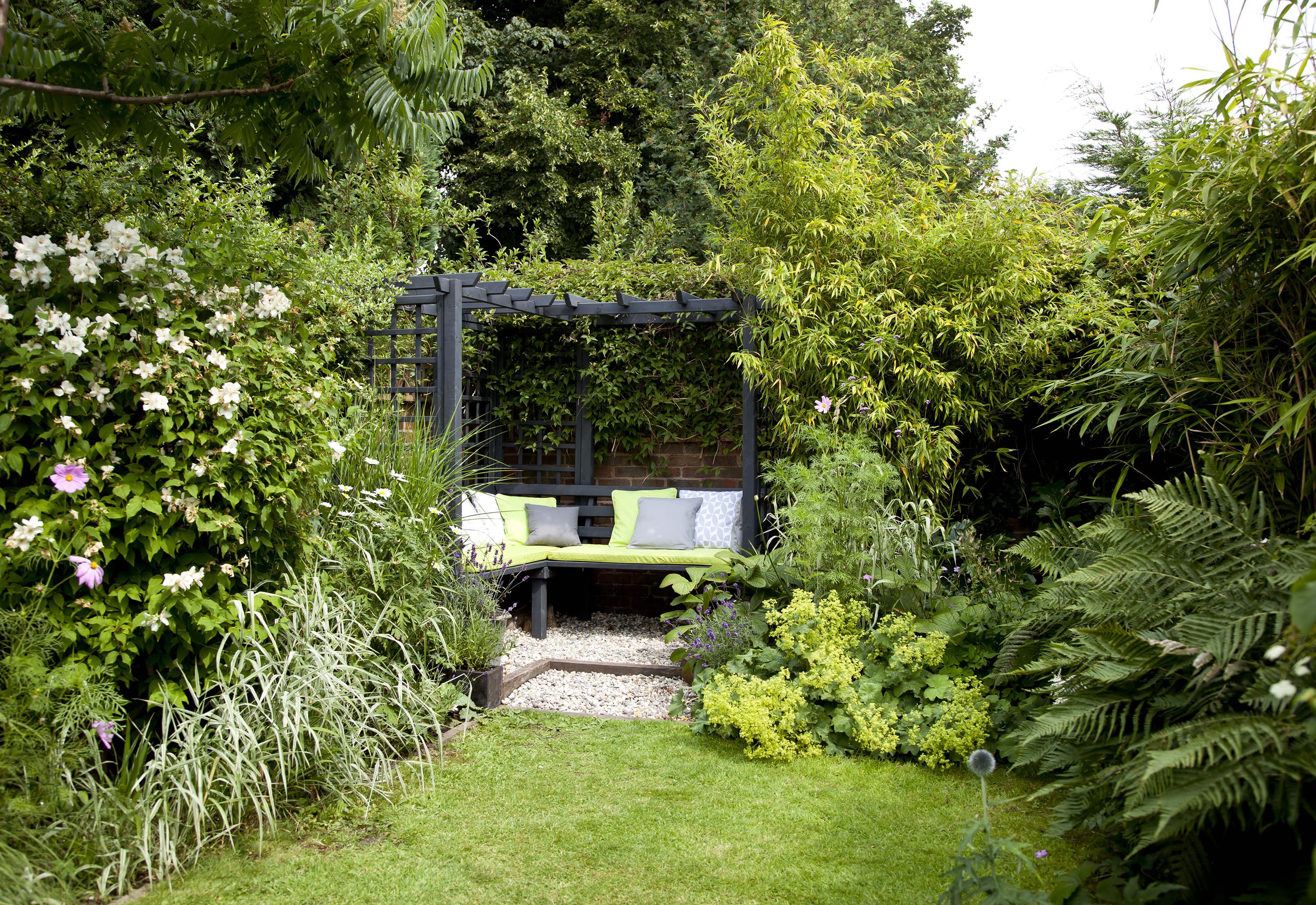
A selection of the best climbing plants will love to scramble over the framework, which provides the perfect support for everything from fragrant honeysuckle to clematis and roses.
For more modern garden ideas, pergolas can be left unplanted and will add an architectural element to your design scheme. They can also be used to mask a view, such as if you want to screen a shed or a neighbour's trampoline, and can be connected to the house on at least one side if you want to make a sheltered patio.
What is a gazebo?
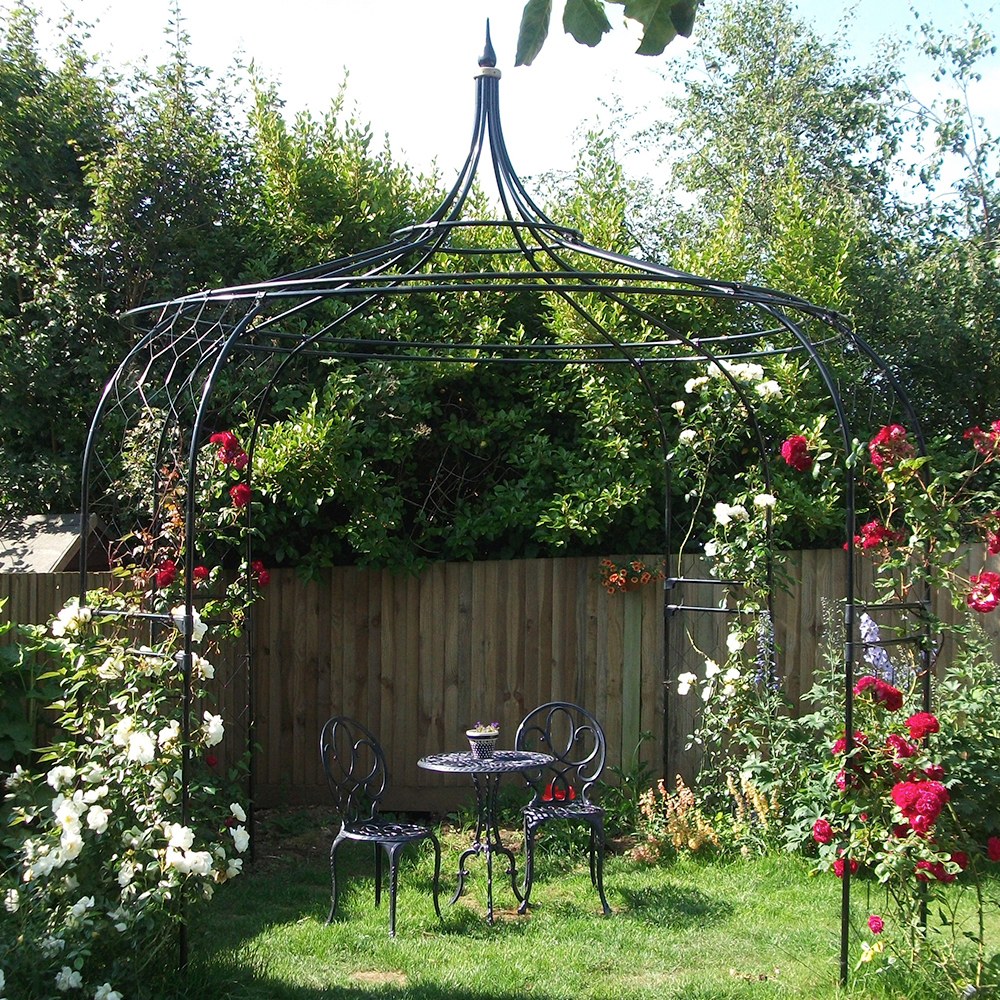
The Gothic garden gazebo from Agriframes is available in a range of sizes from a 1.5m to a spacious 3.6m to suit all settings
A gazebo is a freestanding, open garden structure, with a domed rounded shape that’s sometimes hexagonal or octagonal. It can also feature a roof that’s supported by pillars or columns, but roofless designs are also available.
Most are constructed of wood or metal, and some come with built-in seating inside. They have fully open or semi open sides. To make them feel more private, trellis panels can be added or outdoor drapes.
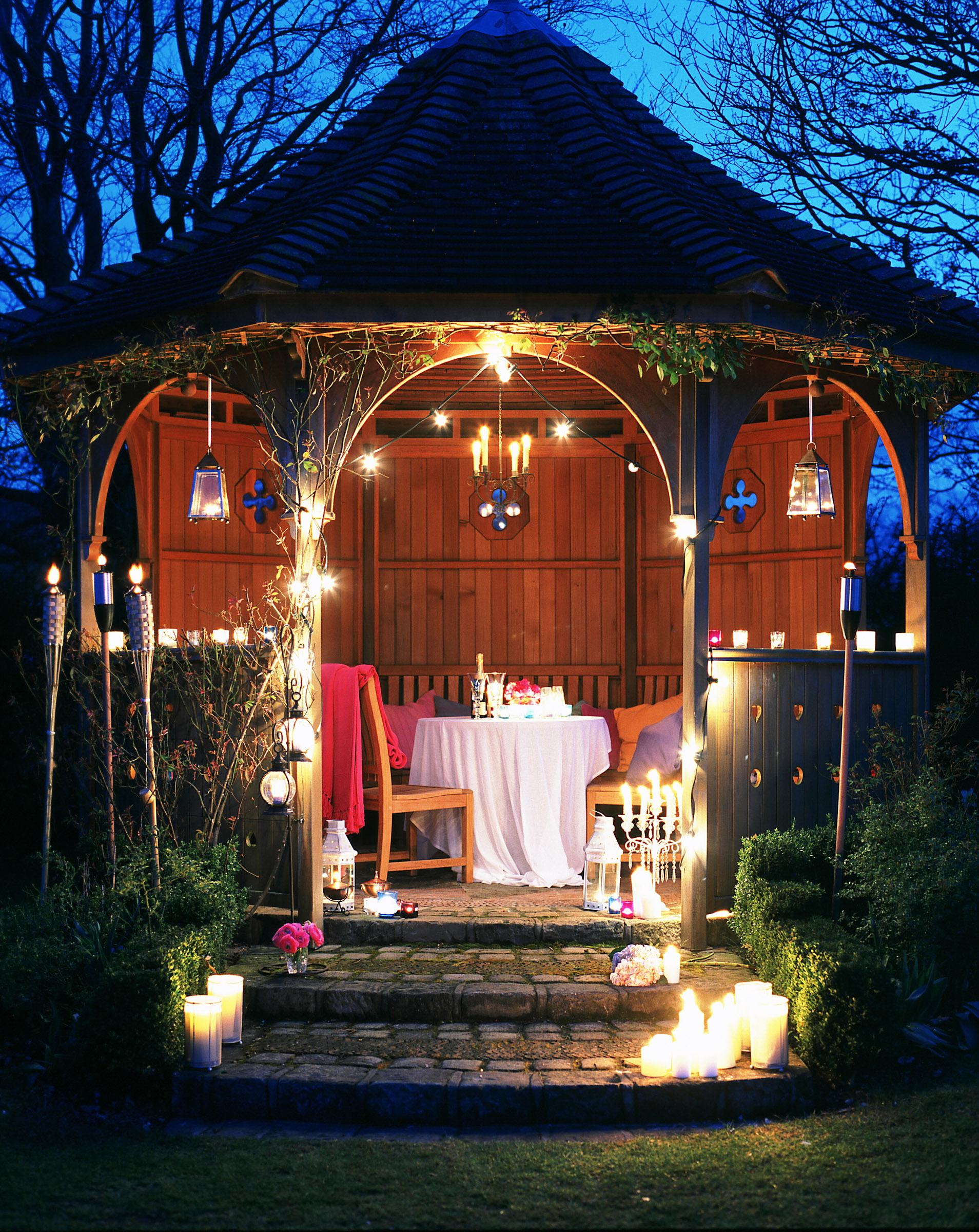
In a garden setting, a gazebo works as an architectural focal point while also providing shelter from sun and rain.
'Creating seating areas within a gazebo away from the house can introduce new views in the garden and are perfect for quiet moments watching the birds and insects go about their lives,' say the experts at Agriframes.
There are also temporary gazebo structures that provide useful shelter from the elements in the garden. Discover convenient and affordable pop-up options in our guide to the best gazebos.
What is an arbour?
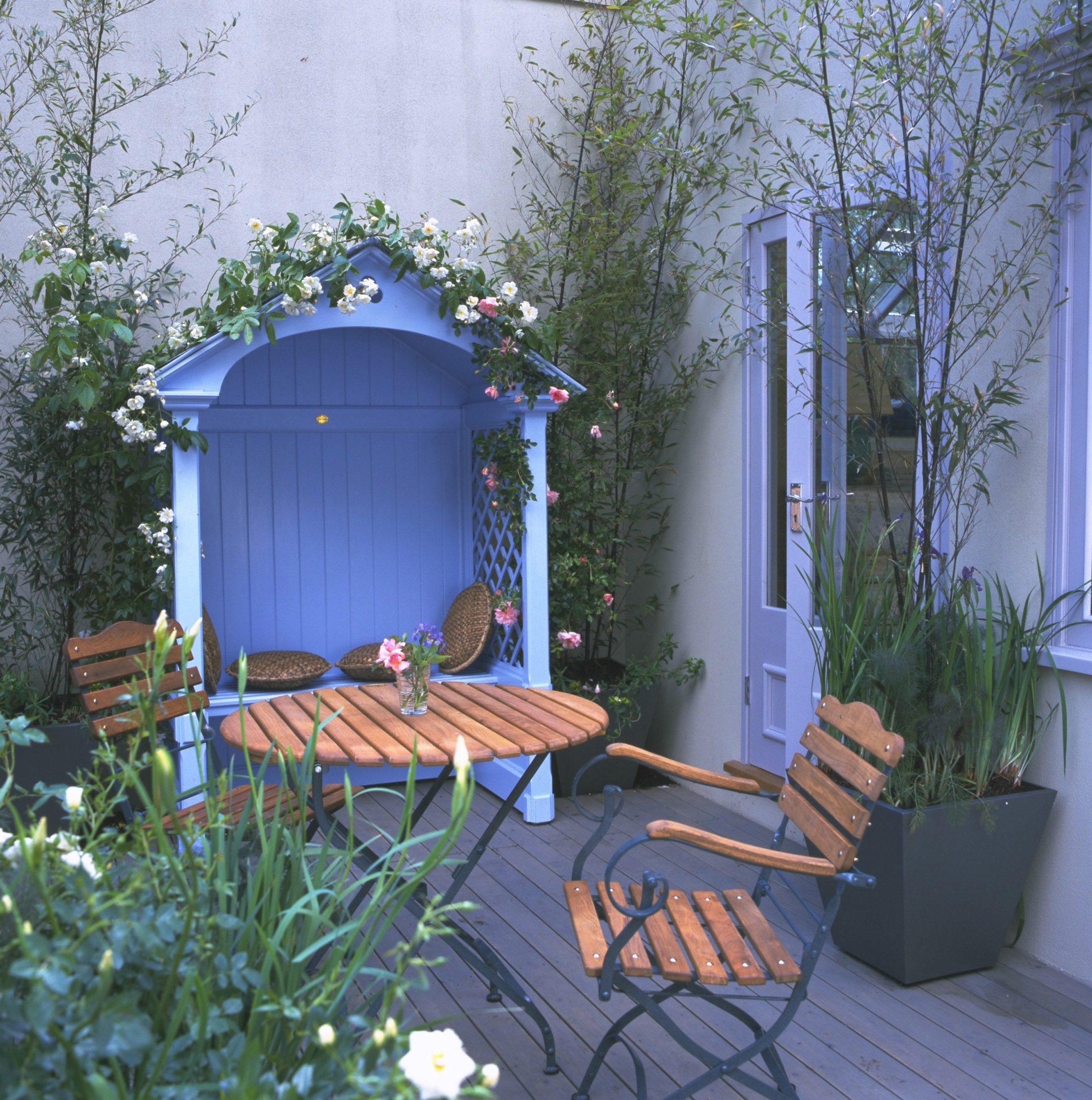
Traditionally an arbour marks the entrance to a garden, and may feature a bench or seating area that's integral to the design. Arbours include two or four posts with a simple slatted roof (often arched, but not always).
The sides of an arbour can be open or covered with lattice or trellis work for a more enclosed effect, particularly if you want to create a green space with plants to enhance your experience.
Arbours can also be used to create a romantic archway covered in trailing plants, or can simply refer to a bench design with semi open sides and a pitched roof, more like a half-gazebo style.
Often made with latticework or trellis, it works as a small sheltered space for taking a moment to reflect, and is particularly heavenly when combined with scented plants to add to the sensory experience.
The importance of planning your arbours, gazebos or pergolas properly
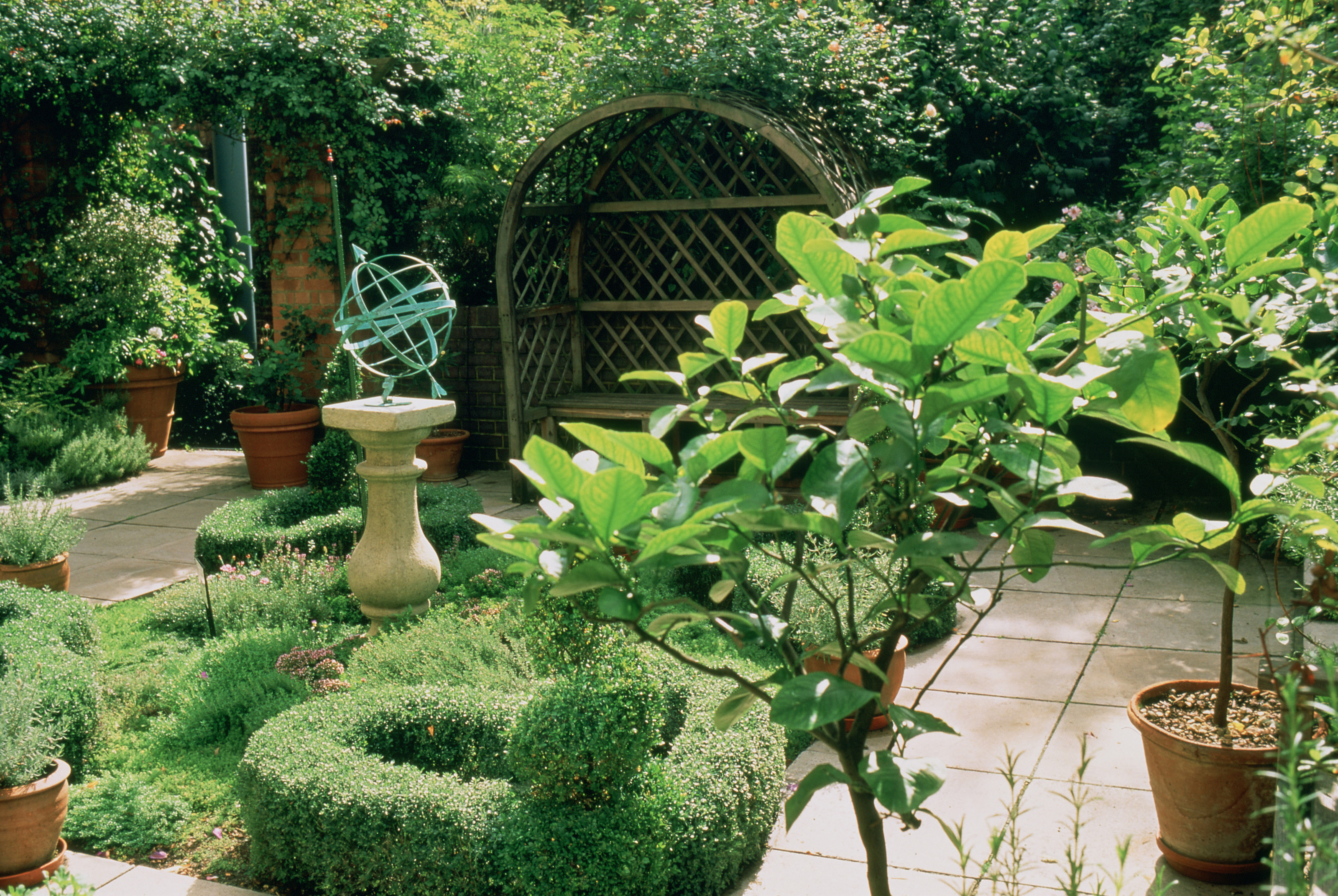
Adding a freestanding architectural structure like arbours, pergolas and gazebos to your outdoor space should be carefully thought through to make sure it enhances the mood of your garden rather than looking out of place.
Do you want to create a shady spot for summer lunches or introduce some garden privacy ideas to a patio that's overlooked by neighbours? Perhaps you'd like to add a strong design element by introducing some bold architectural lines to create a garden focal point.
When you know what you want to use the structure for make sure you have enough space. Measure your best garden furniture that you are planning to use and ensure that you allow enough room for people to move around comfortably. If the space is cramped it won't work for entertaining.
Try experimenting with a set of tall bamboo canes to map out the space before you commit to make sure you choose the best position in your garden. It's important to get the proportions right. Anything too small will feel claustrophobic, while if it's too large it might overly dominate the space. If you erect a structure too close to the house it could block out light and make the interior darker. You can create a real sense of romance if you choose the right spot.
Short on space? Our small garden layout ideas feature is packed with tips on how to make the most of your plot.
What does a built structure add to your garden?
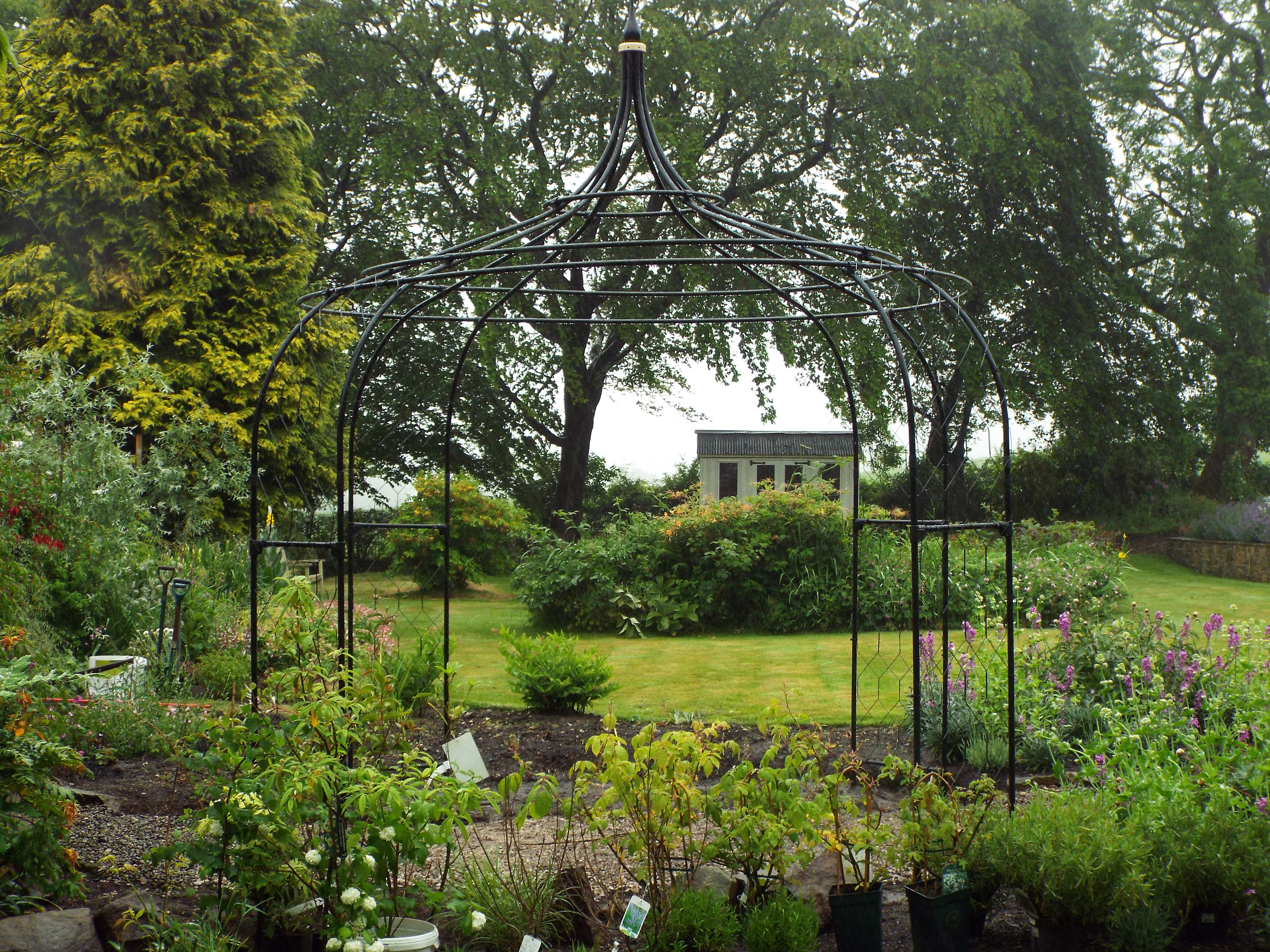
The Gothic garden gazebo from Agriframes comes with a 10 year structural guarantee
There are lots of reasons for adding arbours, pergolas or gazebos to your garden. It doesn’t matter how small your space is. You can still create a calm place to enjoy a moment away from the hustle and bustle. Here are five of our favorite reasons...
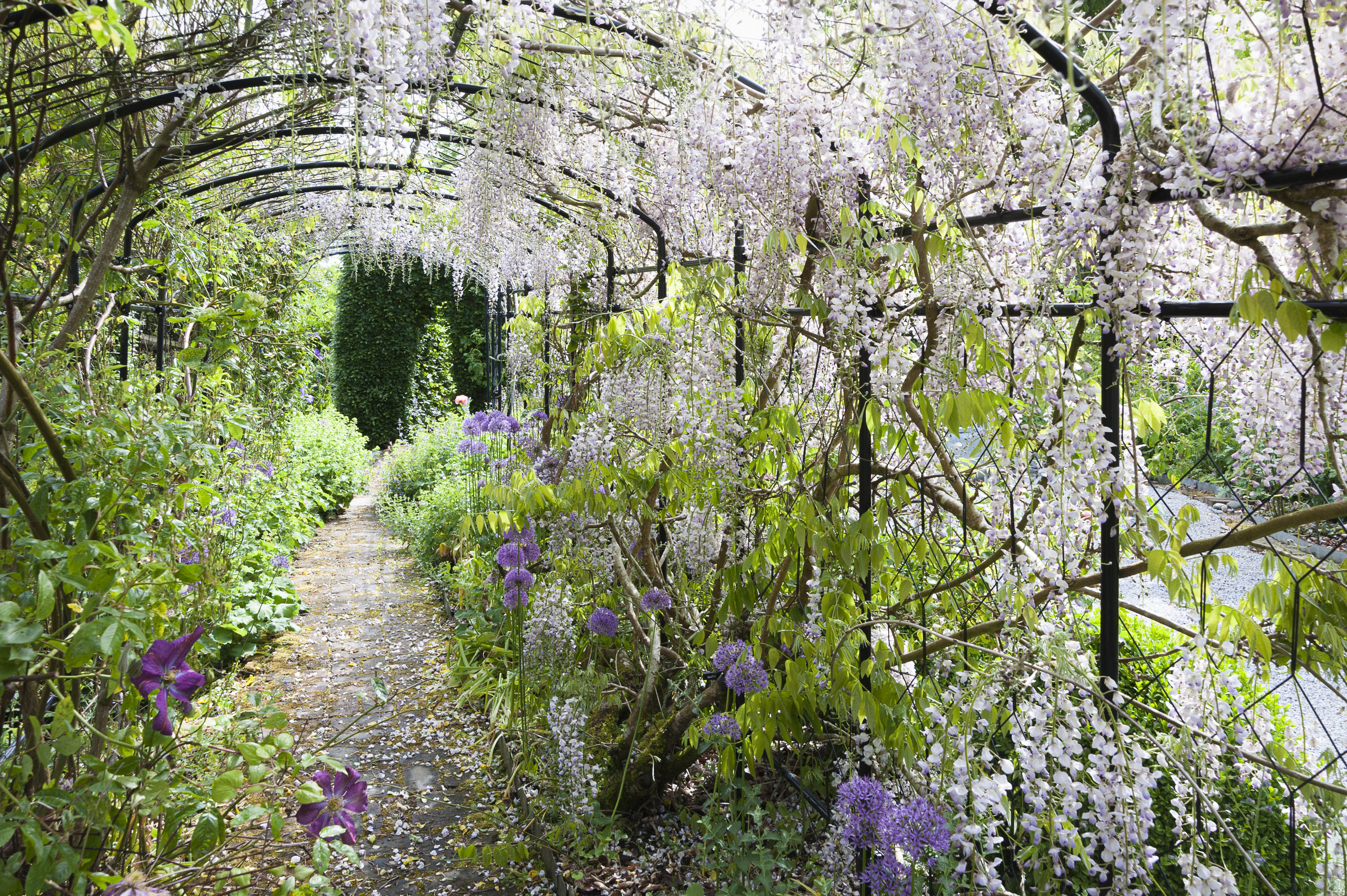
Garden structures such as arbours, pergolas and gazebos, such as this design from Agriframes, are the perfect way to add height to your planting scheme
1. Introduce height to add interest
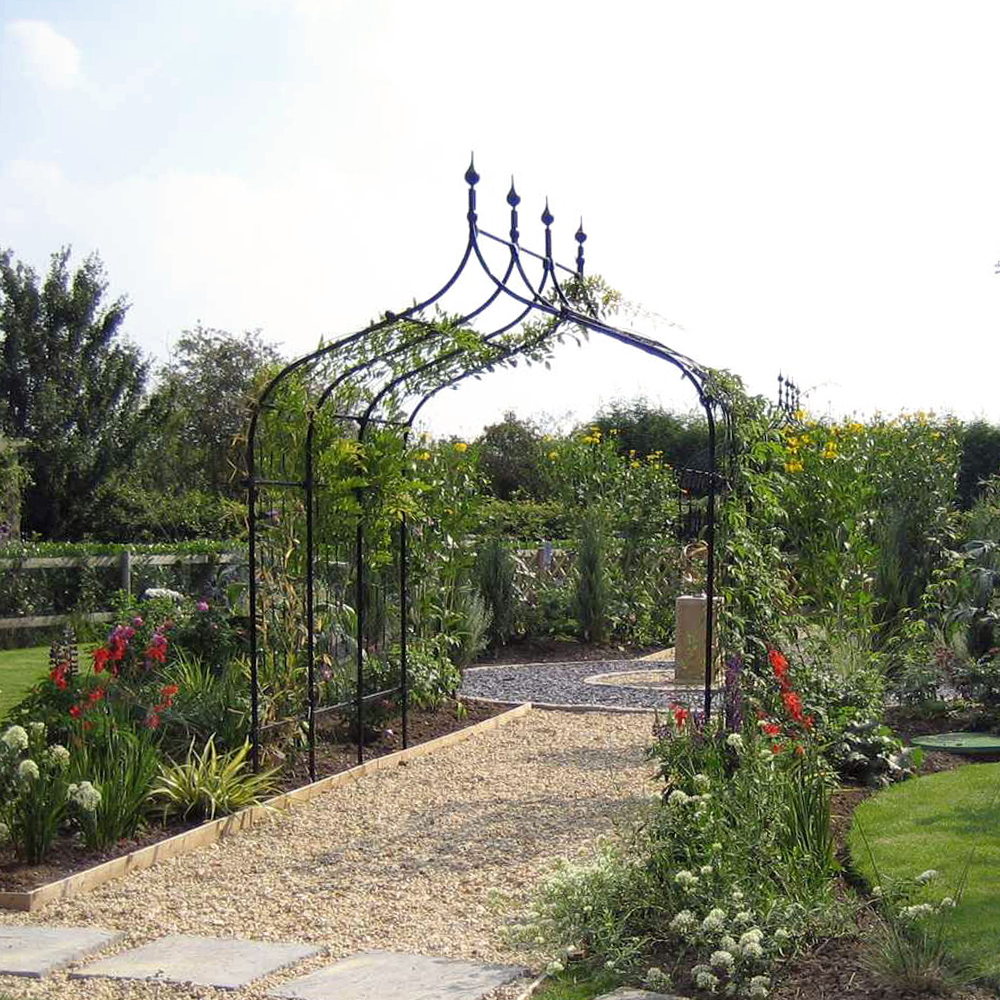
This Gothic pergola from Agriframes features decorative details that enhance the feeling of height in this garden. It can be installed directly into the lawn or border
A range of height levels gives variety and interest to a garden, whatever its scale. Elements that create instant height include pergolas, arbours and gazebos.
Successful garden design is all about creating a journey through the garden with several destination points revealed in stages. It's a good idea not to show everything at once. This is where built structures come into their own, as they can be used as a secret place that's not immediately visible when you first step out into the garden.
Just remember to check local planning restrictions as there are limits on the height of built structures, which might be a factor if you're planning a raised platform for yours, or your garden is split level and slopes upwards.
2. Create a sense of seclusion
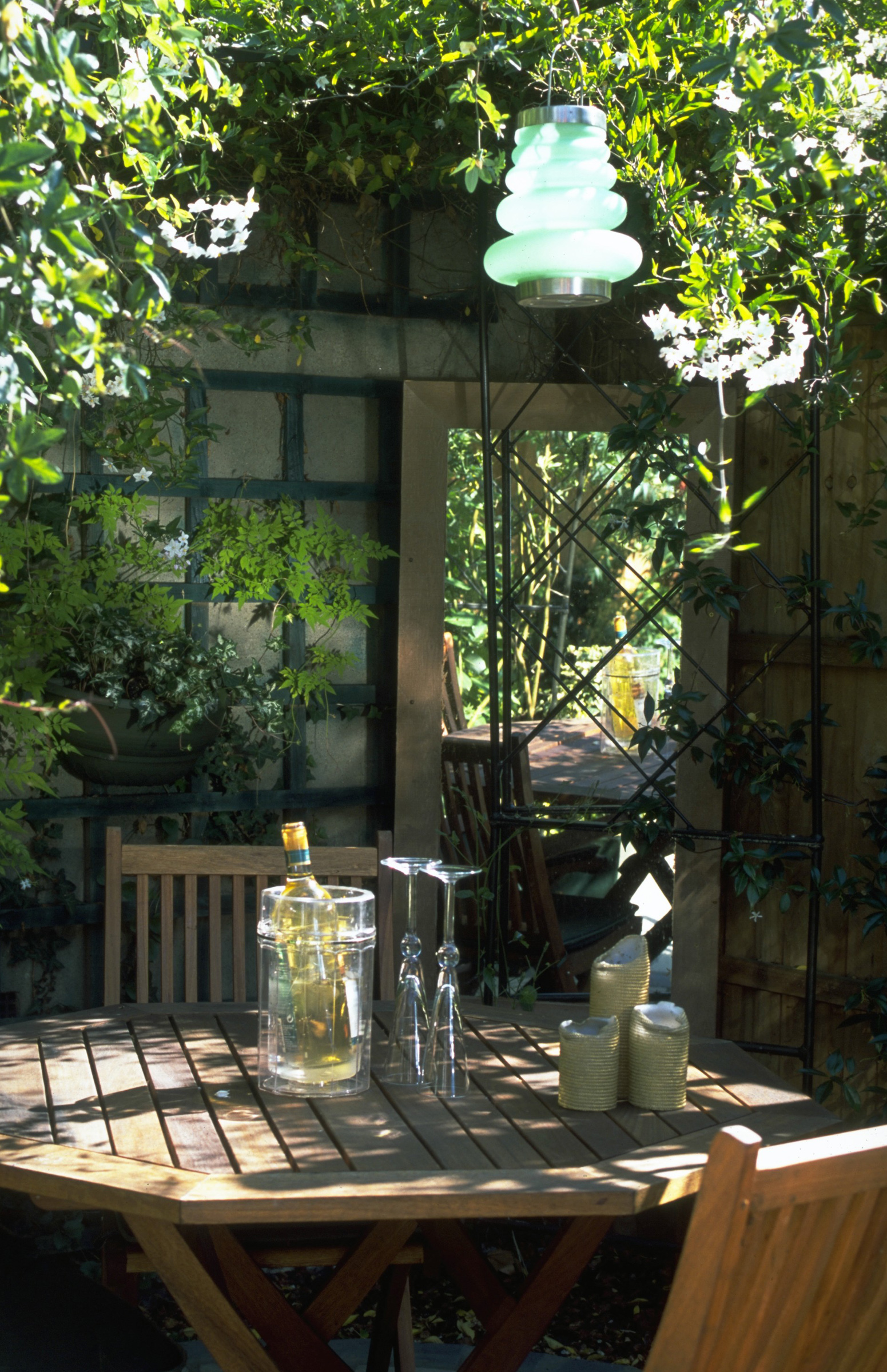
The right garden structure can create a hidden retreat in your outdoor space
Consider what elements can be introduced to make your space feel more private, particularly if it’s in close proximity to other properties. Being overlooked by neighbors is a common problem in town gardens but there are easy ways of getting round this.
Modern pergolas in pre-sized panels can be fitted together in different layouts so you can customize your design to create a secluded spot where you most need it. Off-the-shelf modular products can quickly transform a space and help create a unified look that ties in with your other landscaping ideas and garden boundaries.
The strong lines of a contemporary slatted design provide a stylish backdrop for plants too, creating an extra planting opportunity that offers more privacy as the foliage works as a living wall.
3. Design a space for entertaining
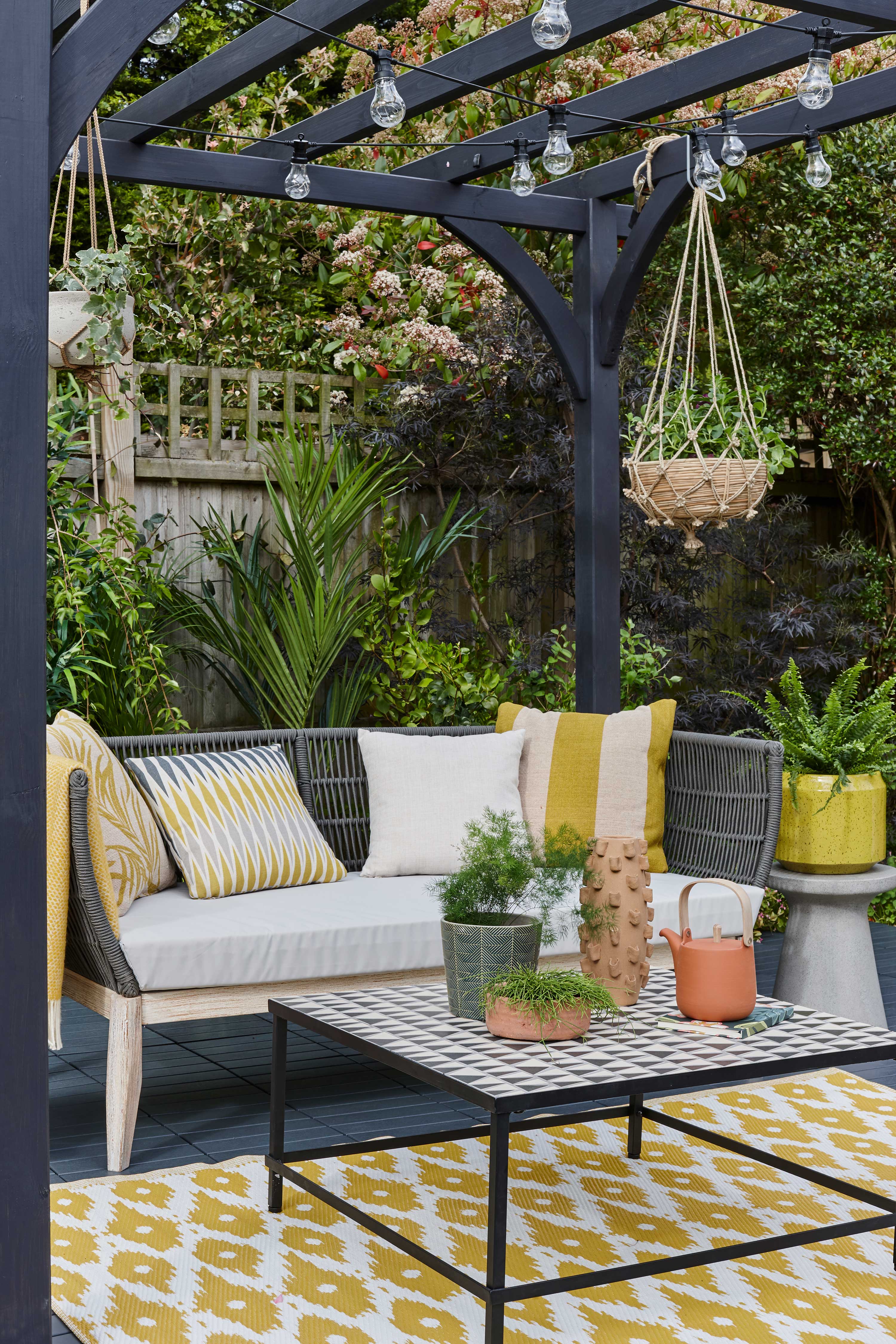
A pergola can be the ideal spot for an outdoor living room
Overhead structures add a new dimension to the possibilities for entertaining in your garden, offering up an inviting space that feels more intimate. Pergolas are perfect for outdoor living space ideas, as they create an instant zone for relaxing, lounging, dining, outdoor cooking or partying.
Ambient lighting turns your space into an evening destination. Dress the framework with festoon lights and group candles in storm lanterns at deck level to add a magical touch that creates a real party feel. When there’s a chill in the air simply add a fire pit or heater so you can max up the time you spend outside.
Let your structure take centre stage and use garden furniture styled up with cushions to create the idea of an outdoor room. If there's space think about adding an outdoor day bed for siestas in the shade.
4. Adding a design element
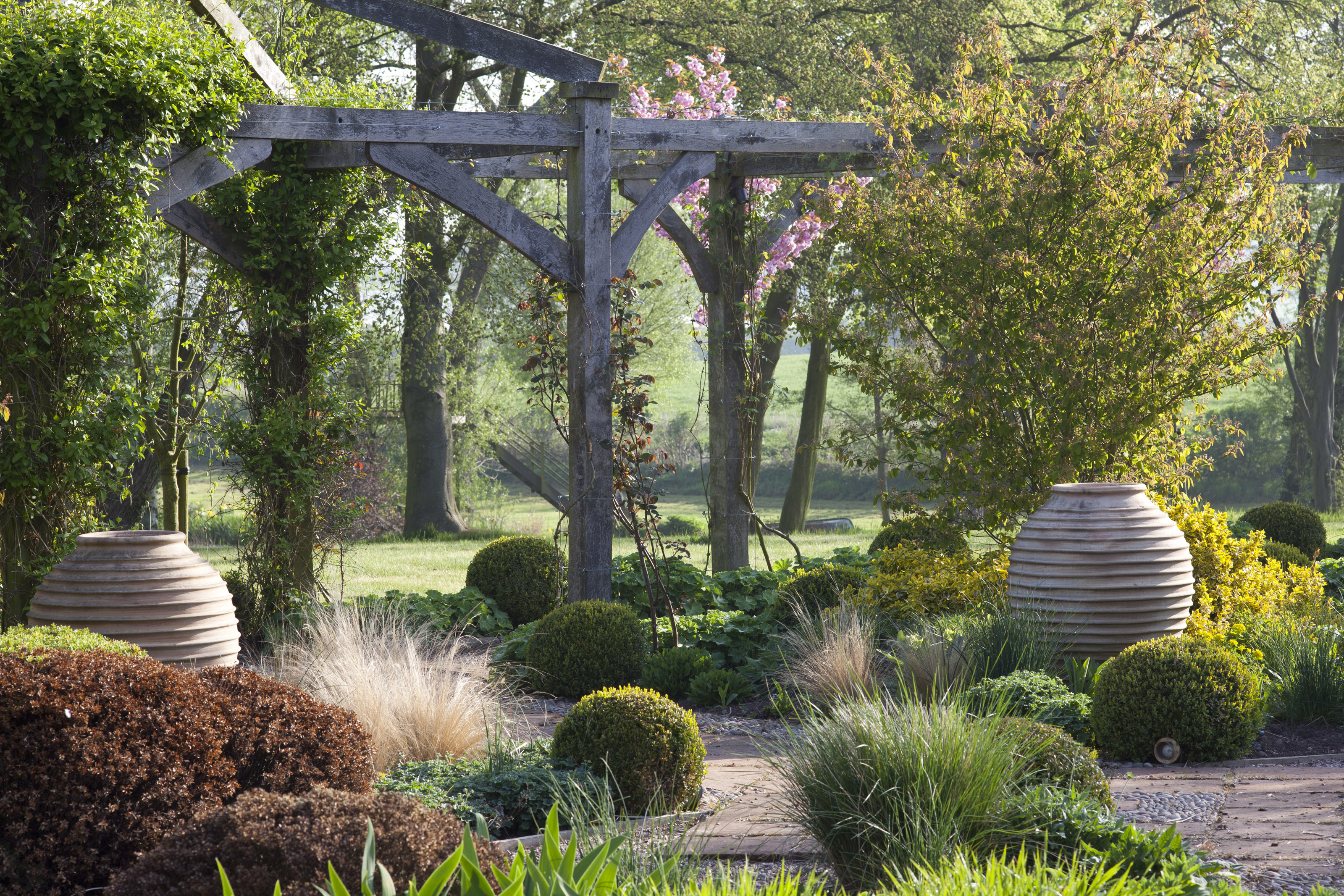
Create a focal point in your space with a garden structure
Overhead structures act as 'destinations' in the garden, drawing you in to them on your journey through the space.
Think vertically to make good use of the space above your garden. A pergola-style structure will add an eye catching architectural element, especially if you leave it unplanted so the clean lines are allowed to work as a design feature in their own right.
This will create a focal point in the garden that you can see from the house and will tie the two spaces together. If you add some garden lighting ideas, at night it will create an atmospheric backdrop that can be enjoyed from indoors too.
Adding a pergola, arbour or gazebo has the bonus of making the interior feel more spacious as the eye is drawn outside beyond the walls.
5. Maxing up planting potential
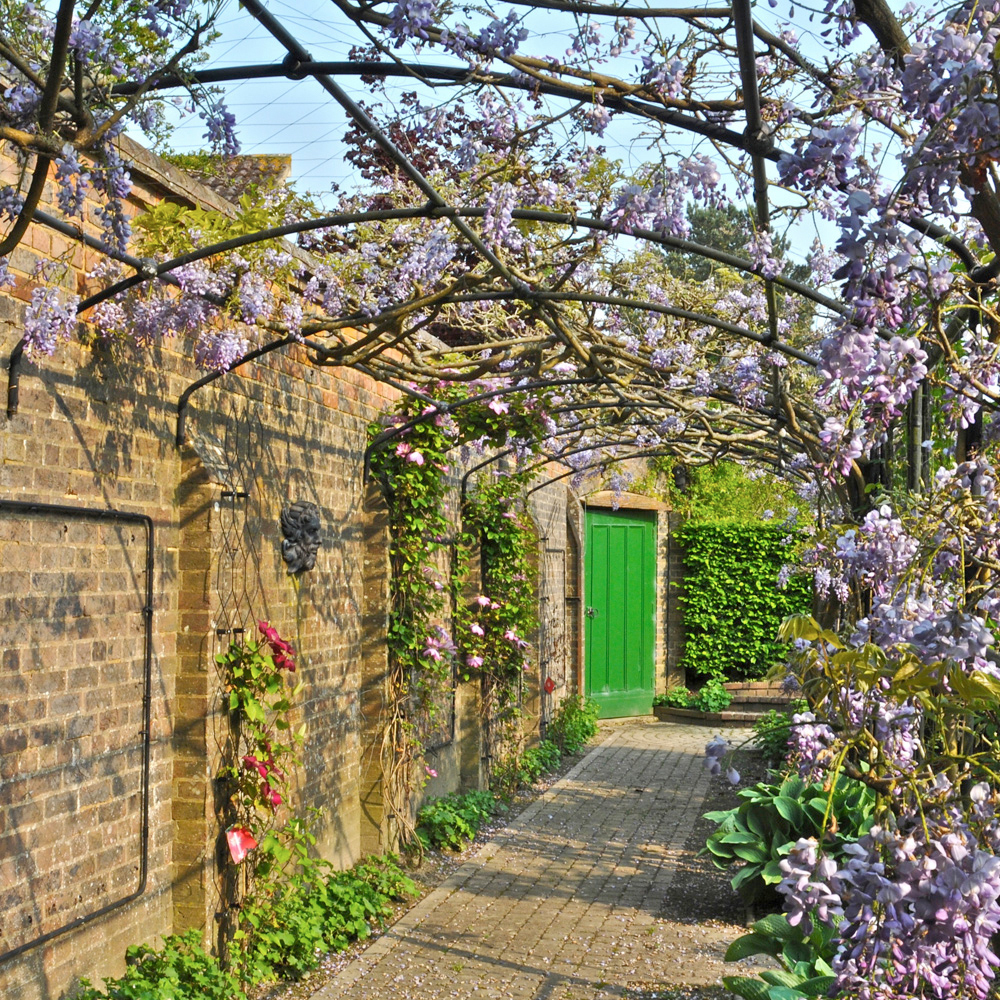
The Monet wall pergola from Agriframes will help you to transform an ordinary wall into a floral walkway
If you want to add layers of planting to your structure to ensure interest and flowers throughout the year, it's important to choose your plants with care.
'Fragrant plants that release scent when you brush past them are always a good choice, like climbing roses, honeysuckle or sarcococa, a smart evergreen that fills the winter air with sweet scent,' say Agriframes.
Choose a selection of the best climbing roses that will flower in succession, then grow one or more clematis through them to add layers of colour before and after the roses bloom. Clematis armandii is beautifully scented, evergreen, good for screening, and will scramble over the top.
Which plants are used and how they are trained will change the aesthetic of the structure. A plant like hot orange trumpet vine (Campsis radicans) will scramble over it abundantly, creating a Mediterranean feel. For a more contemporary look plant with white flowers to create a clean minimal feel.
'Take time to learn about pruning to make sure you enjoy climbers at their best and avoid your gazebo or pergola becoming overwhelmed and dark,' say Agriframes. 'Finally, think big: a spectacular laburnum or wisteria walkway can be recreated, even in a small garden.
Love the sound of a wisteria-covered walkway in your space? Our guide on how to grow wisteria is a great place to start.

Lifestyle journalist Sarah Wilson has been writing about gardens since 2015. She's written for Gardeningetc.com, Livingetc, Homes & Gardens, Easy Gardens and Modern Gardens magazines. Having studied introductory garden and landscape design, she is currently putting the skills learned to good use in her own space where the dream is establishing a cutting garden.
